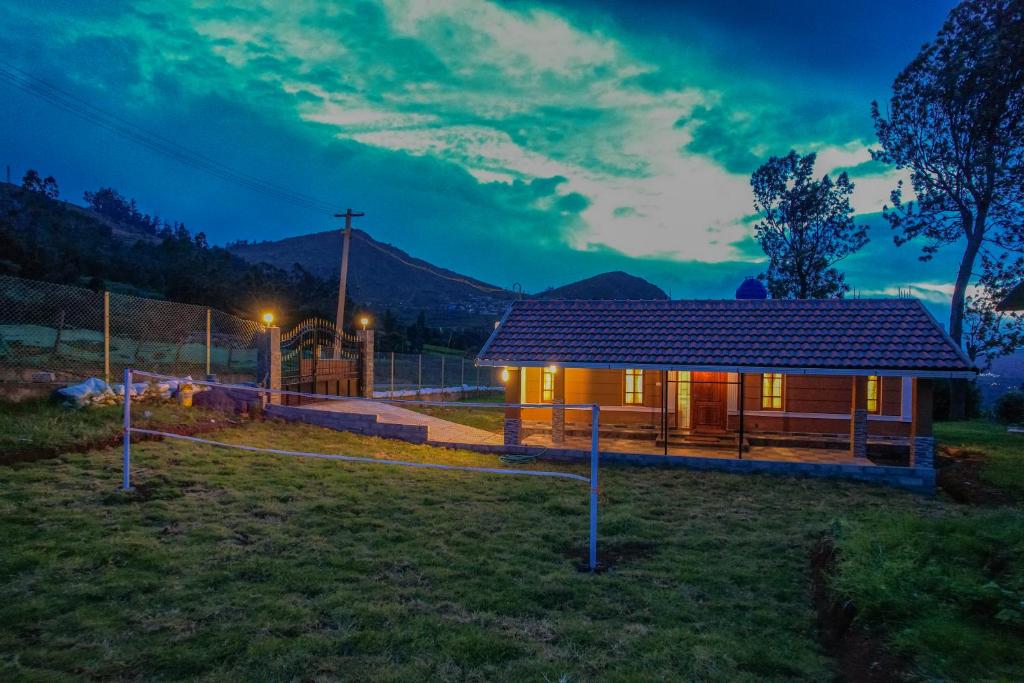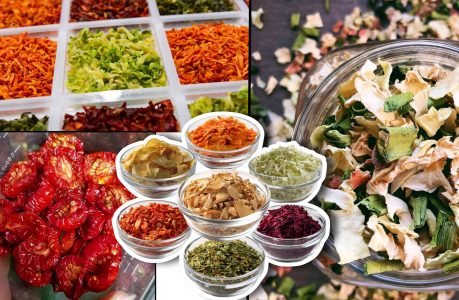 Pin
Pin Dehydrated Vegetables
The food preservation industry has grown tremendously as people seek healthier, longer-lasting alternatives to fresh produce. Starting a dehydrated vegetable business offers an exciting opportunity to tap into this expanding market while building something meaningful and profitable.
What makes this venture even more appealing is the chance to harness solar energy for your operations. This approach not only reduces your overhead costs but also appeals to environmentally conscious consumers who value sustainable practices. The beauty of vegetable dehydration lies in its simplicity—you’re essentially removing water to create concentrated nutrition that can last months or even years when stored properly.
Two main approaches can power your dehydrated vegetable business plan: traditional sun-drying methods that require no electricity, and modern solar-powered systems that give you precise temperature control for faster, more consistent results. Both methods have their place in building a successful operation, and understanding each will help you make the best choice for your specific situation and budget.
Table of Contents
Understanding the Market Demand for Dehydrated Vegetables
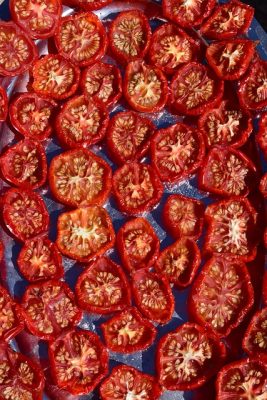 Pin
Pin Dehydrated Tomatoes / Image by Leopictures from Pixabay
The dehydrated vegetable market has experienced remarkable growth, with health-conscious consumers driving demand for convenient, nutritious food options. Busy families appreciate having vegetables that won’t spoil quickly, while outdoor enthusiasts rely on lightweight, portable nutrition for camping and hiking trips. Emergency preparedness has also become a significant factor, as more people recognize the value of having shelf-stable foods that maintain their nutritional content for extended periods.
Market research shows that dehydrated vegetables command premium prices compared to their fresh counterparts when calculated by nutritional density. A pound of fresh tomatoes might cost two dollars, but the equivalent nutrition in dehydrated form can sell for eight to twelve dollars. This price differential creates substantial profit margins for producers who can deliver quality products consistently. The key lies in understanding that you’re not just selling dried vegetables—you’re offering convenience, nutrition density, and peace of mind to customers who value these benefits enough to pay for them.
Selecting the Right Vegetables for Maximum Profitability
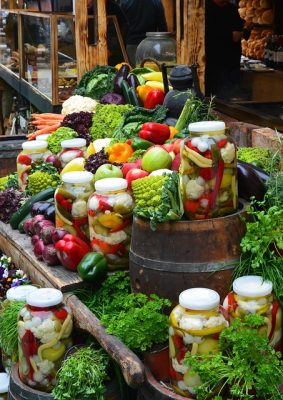 Pin
Pin Vegetables / Image by veronika szappanos from Pixabay
Choosing which vegetables to dehydrate makes the difference between a struggling business and a thriving one. High-water content vegetables like tomatoes, peppers, and zucchini offer excellent profit margins because they shrink dramatically during drying, concentrating their flavors and nutritional value. Tomatoes, for example, lose about 95% of their water weight, transforming ten pounds of fresh tomatoes into just half a pound of intensely flavored dried product that sells for premium prices in gourmet markets.
Root vegetables like carrots, beets, and sweet potatoes represent another profitable category because they dehydrate well and have broad appeal across different customer segments. These vegetables maintain their color and nutritional profile during the drying process, creating visually appealing products that customers associate with quality. Consider seasonal availability when planning your production schedule—purchasing vegetables during peak harvest times can reduce your raw material costs by 40-60%. Building relationships with local farmers often leads to bulk purchase opportunities at even better prices, especially for vegetables that might not meet grocery store appearance standards but are perfectly suitable for dehydration purposes.
Traditional Sun-Drying Method - The No-Electricity Approach
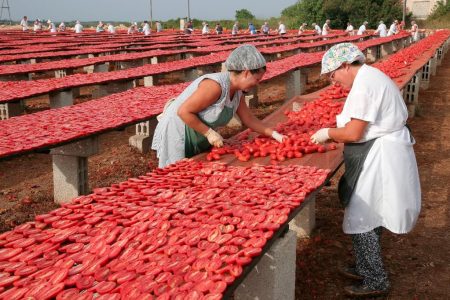 Pin
Pin Sun dried tomatoes / Photo from Cook with Gusto
Traditional sun-drying harnesses the most basic yet effective dehydration principle that humans have used for thousands of years. This method relies entirely on natural sunlight and airflow to remove moisture from vegetables, making it perfect for entrepreneurs who want to start with minimal investment or operate in areas where electricity costs are prohibitive. The process works through a combination of heat, which causes water molecules to evaporate, and moving air, which carries away the moisture-laden air and prevents condensation from reforming on your vegetables.
Building a simple sun-drying setup requires basic materials like food-grade screens, wooden frames, and protective covers for unexpected weather changes. Position your drying racks in areas that receive direct sunlight for at least six hours daily, with good air circulation from multiple directions. The beauty of this method lies in its scalability—you can start with a few small screens in your backyard and gradually expand as your business grows. Temperature control happens naturally as the sun moves across the sky, though you’ll need to rotate your vegetables periodically to ensure even drying. This traditional approach typically takes two to five days per batch, depending on the vegetable type and weather conditions, but the operating costs remain virtually zero once your setup is complete.
Advantages and Challenges of Traditional Sun-Drying
The traditional sun-drying method offers several compelling advantages that make it attractive for new business owners. Your primary benefit lies in the complete absence of electricity costs, which means every dollar earned goes directly toward building your business rather than paying utility bills. This approach also creates authentic marketing appeal, as consumers increasingly seek products made through traditional, natural methods. Many customers willingly pay premium prices for “sun-dried” vegetables because they associate this process with artisanal quality and environmental responsibility.
However, traditional sun-drying presents distinct challenges that require careful planning and realistic expectations. Weather dependency becomes your biggest constraint, since cloudy days, rain, or high humidity can halt production entirely or spoil entire batches if moisture gets trapped. Quality control also proves more difficult without precise temperature monitoring, as some vegetables may dry unevenly or develop off-flavors when temperatures fluctuate dramatically. Think of this method like learning to bake bread without a thermometer—experienced practitioners develop intuitive skills over time, but beginners often face a steeper learning curve. The longer drying times mean you need more space to maintain consistent production levels, and you must factor potential weather delays into your delivery commitments to avoid disappointing customers.
Modern Solar-Powered Dehydration with Temperature Control
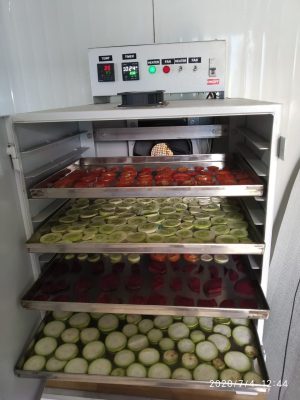 Pin
Pin Electrical Dryer Dehydrator / Photo from Indiamart
Solar-powered dehydration systems represent a significant evolution from traditional sun-drying, combining the environmental benefits of solar energy with the precision control that modern business demands require. These systems use photovoltaic panels to generate electricity that powers fans, temperature controls, and monitoring equipment within enclosed drying chambers. Think of this approach as upgrading from cooking over an open fire to using a modern oven—you still harness solar energy, but now you can control exactly how that energy gets applied to your vegetables.
The core advantage lies in consistent, predictable results that allow you to build a reliable production schedule. Temperature sensors maintain optimal drying conditions between 125-145°F, while controlled airflow ensures even moisture removal throughout each batch. This precision means you can complete most vegetable drying in 8-24 hours rather than the 2-5 days required for traditional methods. The enclosed environment also protects your products from dust, insects, and sudden weather changes that could ruin an entire batch. While the initial investment ranges from \$2,000-\$8,000 depending on system size, the faster processing times and reduced waste often justify these costs within the first year of operation. You gain the ability to process vegetables regardless of cloud cover or humidity levels, essentially turning your dehydration operation into a year-round, weather-independent business.
Essential Equipment and Setup for Solar-Powered Systems
Understanding the components of a solar-powered dehydration system helps you make informed purchasing decisions and avoid costly mistakes that could derail your business plans. The heart of your system centers around three main components that work together like a well-orchestrated team: solar panels that capture sunlight and convert it to electricity, a battery bank that stores energy for cloudy periods or nighttime operation, and the dehydration unit itself with its temperature controls and circulation fans. Solar panels typically need to generate 500-1500 watts depending on your desired production capacity, while battery storage should provide at least 12-24 hours of operation to maintain consistent drying cycles even when the sun isn’t shining.
The dehydration chamber itself requires careful consideration of size, insulation quality, and airflow design to maximize efficiency. Professional-grade units feature multiple removable trays that allow you to process different vegetables simultaneously while maintaining optimal spacing for air circulation. Temperature controllers with digital displays let you set precise drying temperatures for different vegetable types—leafy greens require lower temperatures around 125°F, while dense root vegetables can handle 145°F for faster processing. Proper ventilation systems include both intake and exhaust fans controlled by the same solar power system, creating a continuous flow of dry air that prevents moisture buildup and ensures uniform drying throughout the chamber. The investment in quality equipment pays dividends through consistent results, reduced waste, and the ability to scale production as your customer base grows.
Startup Costs and Financial Planning for Both Methods
Understanding the financial requirements for each dehydration method helps you choose the approach that aligns with your available capital and risk tolerance. Traditional sun-drying requires minimal upfront investment, typically between $200-$800 for basic materials including food-grade screens, wooden frames, protective covers, and simple storage containers. This low barrier to entry makes it possible to test your market and develop your customer base without significant financial pressure. However, you must factor in the hidden costs of slower production, which means you need more space and time to generate the same revenue compared to powered systems.
Solar-powered dehydration systems demand higher initial investment but often deliver superior long-term financial returns through increased efficiency and production capacity. A complete setup including solar panels, battery storage, and professional dehydration equipment typically costs between $3,000-$10,000 depending on your desired production scale. While this represents a substantial upfront commitment, the faster processing times mean you can generate revenue more quickly and handle larger orders that traditional methods simply cannot accommodate. Consider this investment like purchasing a reliable delivery truck for your business rather than relying on bicycle deliveries. The monthly savings on electricity costs, combined with increased production capacity, often allows solar-powered systems to pay for themselves within 12-18 months of consistent operation, especially in regions with high electricity rates or abundant sunshine.
Legal Requirements, Permits, and Food Safety Regulations
Navigating the legal landscape of food production might seem daunting at first, but understanding these requirements protects both your business and your customers while establishing credibility in the marketplace. Food safety regulations exist because dehydrated vegetables, despite their preserved nature, can still pose health risks if not handled properly during processing, packaging, or storage. The FDA treats dehydrated vegetables as processed foods, which means your operation must comply with Current Good Manufacturing Practices (cGMP) guidelines that cover everything from equipment sanitation to employee hygiene protocols.
Starting with local regulations makes the process more manageable, as requirements vary significantly between states and counties. Most small-scale food businesses need a basic food handler’s license for operators, which typically costs $50-$150 and requires completing a food safety course that covers proper handling techniques and contamination prevention. Many states also require a cottage food operation permit if you’re processing food at home, though commercial kitchen certification becomes necessary as you scale beyond certain production volumes or sales thresholds. Think of these permits as building blocks that stack upon each other rather than overwhelming obstacles to overcome all at once. Insurance considerations include general liability coverage to protect against potential foodborne illness claims, plus product liability insurance if you plan to sell through retail channels. These legal foundations might add $500-$2,000 to your annual operating costs, but they’re essential investments that protect your personal assets and demonstrate professionalism to potential wholesale customers who require proof of compliance before placing orders.
Packaging, Branding, and Marketing Your Dehydrated Vegetables
The way you package and present your dehydrated vegetables determines whether customers see them as premium artisanal products or generic commodity items, which directly impacts your profit margins and long-term business success. Professional packaging serves multiple purposes beyond just containing your product—it preserves freshness through moisture barriers, communicates your brand story, and provides essential information that builds consumer confidence. Food-grade packaging materials like vacuum-sealed bags with oxygen absorbers or airtight glass jars create the barrier protection needed to maintain your vegetables’ quality for months or years while preventing oxidation that can cause color changes or nutrient loss.
Your brand story becomes particularly powerful when you emphasize the solar-powered or traditional sun-drying methods used in production. Consumers increasingly seek products that align with their environmental values, and highlighting your sustainable production methods creates emotional connections that justify premium pricing. Consider how your packaging design visually communicates these values through earth-tone colors, natural imagery, or clear statements about your solar-powered processes. Marketing channels should focus on places where your target customers naturally gather—farmers markets allow face-to-face education about your products, while online platforms like Etsy or local Facebook groups enable direct-to-consumer sales with higher profit margins than wholesale distribution. Building relationships with local restaurants and specialty food stores creates consistent bulk orders that provide steady revenue streams, especially when you can demonstrate the reliability and quality consistency that professional kitchens demand for their menu planning.
Scaling Your Operation and Managing Seasonal Challenges
Understanding how to scale your dehydrated vegetable business requires careful balance between growing production capacity and maintaining the quality standards that built your initial customer base. The transition from small-batch artisanal production to larger commercial volumes presents unique challenges that many entrepreneurs underestimate. As you expand, your solar-powered systems must grow proportionally to handle increased throughput, which means adding more solar panels, battery storage, and dehydration chambers in coordinated increments. Think of this scaling process like expanding a garden—you can’t simply plant ten times more vegetables in the same space and expect the same results. Each expansion requires proportional increases in infrastructure, monitoring capabilities, and quality control processes.
Seasonal challenges affect both production and sales cycles in ways that require strategic planning throughout the year. Peak harvest seasons offer opportunities to purchase vegetables at their lowest prices, but they also demand maximum processing capacity when your solar systems receive the most consistent sunshine. The key lies in understanding that summer abundance must carry you through winter months when both raw materials become expensive and solar energy production decreases in many regions. Smart operators develop preservation strategies that extend beyond simple dehydration, such as creating mixed vegetable blends during peak seasons that command higher prices during off-seasons. Building relationships with greenhouse operators or establishing cold storage agreements allows you to smooth out these seasonal fluctuations, essentially creating your own supply chain buffer that protects against both raw material shortages and price volatility that could threaten your profit margins.
Long-Term Business Sustainability and Profit Optimization
Building a sustainable dehydrated vegetable business extends far beyond mastering the technical aspects of solar-powered dehydration—it requires developing systems that can adapt and thrive through changing market conditions, technological advances, and evolving customer preferences. The most successful operations create multiple revenue streams that complement their core dehydrated vegetable products, such as offering custom dehydration services for other local producers, selling educational workshops about solar dehydration techniques, or developing value-added products like vegetable seasoning blends that command premium prices. This diversification strategy works like a three-legged stool, where multiple income sources provide stability even when one market segment experiences temporary downturns.
Profit optimization becomes an ongoing process of fine-tuning every aspect of your operation to maximize efficiency while maintaining quality standards. Data tracking plays a crucial role in this process, as monitoring electricity savings from solar systems, yield ratios from different vegetable varieties, and customer purchasing patterns reveals opportunities for improvement that might otherwise remain hidden. Consider implementing simple record-keeping systems that track the cost per pound of each vegetable type processed, seasonal price variations in raw materials, and customer feedback about product quality or packaging preferences. This information becomes invaluable when making decisions about expanding product lines, adjusting pricing strategies, or investing in equipment upgrades. The businesses that survive and thrive long-term understand that success comes from treating dehydrated vegetables not as a simple preservation process, but as a value-creation system that transforms abundant seasonal produce into year-round income opportunities that serve real customer needs while building genuine community relationships.
FAQs
First-year profits range from $5,000-$25,000 depending on your production scale and market approach. Part-time operations typically generate $5,000-$10,000, while full-time solar-powered setups can reach $15,000-$25,000 through consistent production and direct sales channels.
Underestimating the importance of proper packaging and storage solutions. Many beginners focus entirely on the drying process but lose money when their products spoil due to inadequate moisture barriers or poor storage conditions that allow rehydration and spoilage.
Yes! Modern solar systems include battery banks that store energy during sunny periods. A properly sized battery system provides 24-48 hours of operation during cloudy weather, while winter production typically runs at 60-70% of summer capacity in most regions.
Tomatoes, peppers, and mushrooms offer the best returns, often selling for 8-12 times their fresh weight equivalent. These high-water content vegetables shrink dramatically during drying, concentrating flavors and creating premium products customers pay extra for.
Most states require a food handler’s license ($50-$150) plus cottage food or commercial kitchen permits depending on production volume. Start by contacting your local health department for specific requirements, as regulations vary significantly between locations and sales channels.
